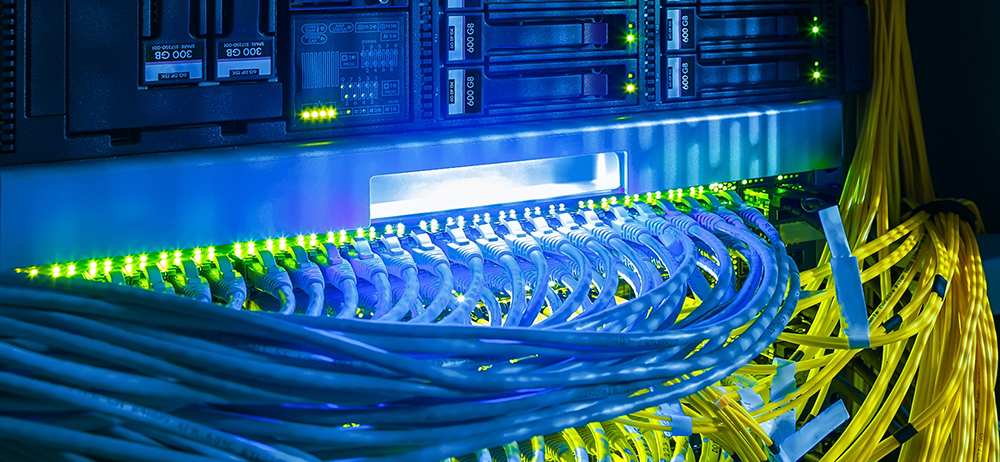By the year 2003, 4 exabytes of data had been generated worldwide. This data volume is now generated every two days. Year on year we generate more and more data in shorter periods of time. In view of the developments in the course of global digitisation, I see neither signs nor reasons for a reversal of this trend.

The effects of these developments on the world of work can no longer be overlooked today. Digitisation and globalisation have had a considerable effect on the world of work, new ways of working are eclipsing older methods more rapidly than ever before. Previously, process and office automation played a rather subordinate role and the scope of data volumes and applications were very limited, everything was usually managed from a single server room located on-site. Super-regional and global organisations used leased lines and paths for the exchange of their data for
a limited period.

“Connect to the future with patch cable solutions – powerful & flexible for tomorrow’s infrastructure.”
This has changed significantly as agility and flexibility become more important in business processes and the IT landscape as companies can no longer be limited in time and place during the course of the digital transformation. Work 4.0 and Smart Working are the visible signs of this change. Digital, intelligent workflows, networked company-wide processes, data and documents are distributed worldwide in a matter of seconds, creating a huge amount of important data every single second. Cloud applications offer companies the increased availability of larger data capacity with a simple front-end backed by lower costs per user, or application, than is possible using traditional technologies. This reduces risks to businesses in terms of capital requirements, dependency, implementation, operation and maintenance. Shifting from on-site to off-site IT infrastructure allows for easy scaling to meet future requirements and processes to all companies, regardless of size.
This shift inevitably has consequences. One of consequences is the need to focus on connectivity. Any IT or AV architecture that is based off-site and uses cloud computing but does not use high-quality, reliable connections is risking billions of megabytes of data and processes. High performance requirements in data centres demands state-of-the-art products, especially when talking about cable infrastructure. Copper-based connectivity is a flexible and economical solution that still offers a large amount of bandwidth and scalability to meet current, and future, requirements.

Patch cables deserve special attention as they represent the lifelines of modern communication infrastructure. With our patch cable range, we have therefore set ourselves the task of directing our attention to these seemingly insignificant components and making them clear: Their reliability therefore stands or falls by the function and supply of entire company locations and the future digitalisation of company processes; because efficient cabling is the physical basis for high-speed applications in the office and building cabling sector. Patch cables are business critical to many company operations and can easily be integrated with new and emerging technologies, however a single unreliable patch cable can jeopardize all communication between servers with mission-critical data and functions, resulting in huge losses. These losses can be easily avoided by selecting high quality and high-performance patch cables. Further information on patch cords and connectivity can be found here.
Owen HAIGH
Head of Global Product Management